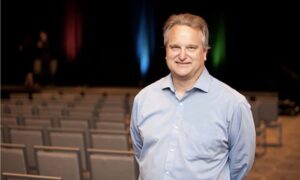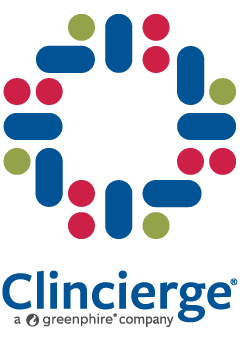International Week of Deaf People (#IWDP) is an initiative of the World Federation of the Deaf (WFD). It is celebrated annually by the global Deaf Community during the last week of September and commemorates the first World Congress of the WFD held in 1951 in Italy. The theme for 2023 is A World Where Deaf People Can Sign Anywhere!
International Week of the Deaf is celebrated through various activities by the respective Deaf Communities worldwide, including those who identify as:
- Big D, Deaf: Used when referring to a particular group of deaf people who share a language, American Sign Language (ASL), and a culture
- Little d, deaf: Used when referring to the audiological condition of not hearing
- Hard of Hearing (HoH): Used to denote a person with mild-to-moderate hearing loss; it can represent a deaf person who doesn’t have/want any cultural affiliation with the Deaf community or both
Diseases Leading to Deafness
Aside from being an inheritable trait and a common symptom of aging, there are an estimated 400 rare diseases that impact one’s ability to hear, including:
- Auditory Neuropathy: A hearing disorder in which the inner ear successfully detects sound but has a problem with sending sound from the ear to the brain. It can affect people of all ages, from infancy through adulthood. The number of people affected by auditory neuropathy is unknown, but current information suggests that auditory neuropathies play a substantial role in hearing impairments and deafness.
- Otosclerosis: Otosclerosis is a term derived from “oto”, meaning “of the ear,” and “sclerosis”, meaning “abnormal hardening of body tissue.” The condition is caused by abnormal bone remodeling in the middle ear. Bone remodeling is a lifelong process in which bone tissue renews itself by replacing old tissue with new. In otosclerosis, abnormal remodeling disrupts the ability of sound to travel from the middle ear to the inner ear. Otosclerosis affects more than three million Americans. Many cases of otosclerosis are thought to be inherited. White, middle-aged women are most at risk.
- Pendred Syndrome: Pendred syndrome is a genetic disorder causing early hearing loss in children. It also can affect the thyroid gland and sometimes creates problems with balance. The syndrome is named after Vaughan Pendred, the physician who first described people with the disorder.
- Usher Syndrome: Usher syndrome is the most common genetic condition affecting hearing and vision and sometimes also affects balance. The primary symptoms of Usher syndrome are deafness or hearing loss and an eye disease called retinitis pigmentosa.
- Waardenburg Syndrome: This hereditary disorder is characterized by hearing impairment, a white shock of hair and/or a distinctive blue color to one or both eyes, and wide-set inner eye corners. Balance problems are also associated with some types of Waardenburg syndrome.
Special Considerations for Clinical Trial Interactions
Increasing diversity and inclusion in clinical trials continues to be a challenge for the pharmaceutical industry. It is imperative to make trial enrollment and participation more accessible and accommodating. When encountering those who are Deaf or hard of hearing, healthcare professionals, clinical site staff, and patient concierge services companies should not:
- Assume a deaf or HoH person considers their hearing status a disability
- Assume a deaf or HoH person can read lips
- Assume a deaf or HoH person knows sign language, as sign language is not a universal language and varies depending on country and region
Additionally, to convey study participation appreciation to Deaf or hard of hearing individuals and improve engagement in the clinical trial, industry stakeholders should:
- Provide an interpreter if requested
- Position the interpreter near the speaker with a clear line of sight and ensure appropriate lighting at all times
- Look at and speak directly to the deaf or HoH participant
- Speakers should state their name before speaking so an individual will know who is talking
- Speak at a normal tone and pace; the interpreter will instruct the speaker to pause or slow down
- Permit only one person to speak at a time during group discussions to alleviate confusion
- Allow for a brief pause between each speaker
- Allow the interpreter time to finish translating so the deaf or HoH participant can ask questions
- Interpreters should only be asked to facilitate communication; they are not personal assistants
Important statement from the National Association of the Deaf (NAD) on selecting culturally appropriate interpreters.
Core Values of the Deaf Community
One shared goal within Deaf culture is finding solutions to obtain effortless visual access to the world. This goal has led the Deaf community to develop many cultural behaviors and values with the hearing people in their lives in mind. Because of this, Deaf people have successfully integrated into the larger, hearing society, leading rich and rewarding lives.
Traditionally, the primary descriptors of Deaf culture have been the shared experience of attending a residential school for the deaf, frequenting Deaf clubs, or using American Sign Language (ASL). However, these facets of Deaf culture are not an accurate representation of the daily lives of most Deaf individuals and do not explore the deeper elements of deafness.
Solutions for Effective Communication
The vast majority of deaf children are born into hearing families who have little to no experience with deafness and may be opposed to using sign language. In such instances, deaf children grow up in an environment without access to a language or form of communication natural to them. For a deaf child, having access to a time-tested language, such as ASL, allows them to communicate their needs, desires, ambitions, and even abstract ideas. Like all languages, ASL has continued to mature through each generation of use, providing Deaf individuals with unrestricted access to communication.
Also, the Deaf community has been fighting for their right to effective communication for generations. Without access to unrestricted methods of communication in their homes, at school, in the workplace, and in their communities, Deaf individuals are likely to be excluded from full participation in society and may be treated as second-class citizens.
Access to Information
For much of the hearing population, information is primarily available through auditory means (i.e., the radio, television, a discussion happening in proximity, etc.), which makes access to information especially difficult for deaf individuals. For a person who is deaf, data is often received in an incomplete state, with crucial details missing. To combat the persistent gaps in information, Deaf individuals have adapted their ability to obtain information by supporting each other whenever possible and working together to get the complete picture. Consequently, information sharing has become a core value of the Deaf community.
Validation of the Deaf Experience
When someone feels different from those around them, it can be challenging to maintain a positive self-image. Imagine being born a deaf child into a hearing family with no prior experience with deafness. Their earliest memories are of their parents visiting various medical professionals with whom they cannot effectively communicate. They cannot understand the problem yet feel something is wrong with them. They attend countless hours of intensive speech therapy sessions and contemplate invasive surgery options to live a life deemed as “normal.” Once enrolled into a mainstream school with no deaf peers to associate with, they often feel isolated and left out. Considering how common this scenario is, it is not surprising that many deaf children grow to look unfavorably at their deafness.
Deaf Acceptance
In 1880, when Robert McGregor was elected as the first president of the National Association for the Deaf (NAD), he stated the following about the Deaf community, “We have interests peculiar to ourselves which can be taken care of by ourselves.” McGregor’s attitude played a significant role in separating the association of the Deaf community from the disabling perceptions the majority of society had of them.
Through self-determination, the Deaf community has secured permanent locations for Deaf meeting spaces, clubhouses, and businesses structured to meet their societal needs. Although Deaf individuals have the tools they need to lead rich lives, the Deaf community is still faced with the preconceptions of the hearing world that they have a disability and would be happier if they could hear.
The Future of the Deaf Community
Many believe there has never been a better time in history to be Deaf. In today’s world, a plethora of educational and professional opportunities, lifestyle choices, and language options exist for individuals who are deaf. Most educational institutes accept ASL as being on par with any other spoken language, interpreters are accessible to the public, and information about Deaf culture and ASL is widely available.
Research companies continue to invest billions of dollars in the search for a cure for deafness. With scientific advancements in stem-cell research, it is becoming more possible to identify deaf-linked genes through DNA and to reestablish hearing capabilities through nerve regeneration. These advancements are seen as a positive for individuals who consider their deafness a disability, but for others within the Deaf community, it is viewed as another step closer to the total erasure of their culture.
“Self-determination is the right to make decisions affecting one's own community and not be controlled or dominated by the majority population. This is critical to the respect and preservation of any culture."
Thomas Holcomb

How Patient Concierge Services Benefit Deaf and Hard of Hearing Patients
Deaf and hard of hearing patients who enroll in clinical trials must often overcome many emotional, financial, and logistical barriers to participation in a study, including the significant obstacle of communication. Many healthcare and clinical research staff do not know or understand ASL and other sign languages, leading to a lower level of comprehension of what is involved and expected of a clinical trial participant.
However, patients who enroll in Clincierge’s high-touch patient concierge services are paired with a Clincierge Coordinator who will remain with them through the entirety of the trial.
The coordinator:
- lives in the patient’s time zone,
- speaks their native language, and that used in the trial
- and understands their cultural nuances.
- shares their cell phone number for ease of contact,
- can also arrange additional communication preferences.
For deaf and hard of hearing patients, coordinators will:
- communicate with patients via email or other preferred methods and
- connect with interpreters to improve the patient’s level of communication and understanding
- understand the unique needs of every participant, and
- strive to improve the patient’s experience while in the clinical trial.
With this additional layer of support, members of the Deaf and hard of hearing community will be better enabled to enroll and remain engaged in a clinical trial throughout completion.
Additional Deaf Community Resources
- For additional resources about Deaf culture, please visit the National Association of the Deaf.
- For more information, please read our 2023 Deaf History Month blog.
- To learn more about medical advancements for the deaf community, please read this article: Children’s Hospital of Philadelphia Performs First in U.S. Gene Therapy Procedure to Treat Genetic Hearing Loss
#DeafCommunity #DeafCulture #IWDP



